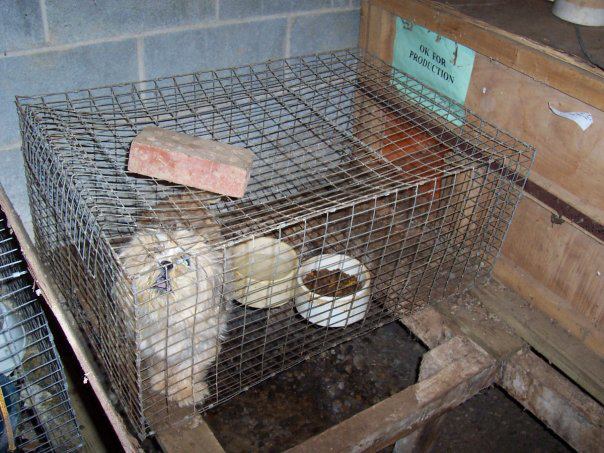On Saturday, August 22nd , beginning at 2pm, at the Owens Auditorium at the Sandhills Community College, the County Animal Response Team (CART) will be hosting an invaluable event for those owning or caring for pets and/or domesticated animals in Moore County. A free showing of the award-winning documentary, “Katrina Tails,” will be followed by a presentation and discussion about Moore County’s newly-revised Animal Response Plan to be executed during disasters. Call 910-947-2858 for more details.
More information:
GROUNDBREAKING DISASTER PLAN FOR MOORE COUNTY’S ANIMALS
On August 22nd, the County Animal Response Team (CART) will be hosting an invaluable event for those owning or caring for pets and domesticated animals in Moore County. A free showing of the 2008 Accolade Award-winning documentary, “Katrina Tails,” will be followed by a presentation and discussion about Moore County’s newly-revised Animal Response Plan. The event will take place at the Owens Auditorium at Sandhills Community College beginning at 2pm.
Doug Harris, a Katrina victim, remembers being asked to leave his pets behind: “We were informed that buses would be taking everyone to higher ground and we would not be able to take our pets with us,” he said. “The worst was being forced to walk away from my beloved dogs who loved and protected us for years and would never have done that to us for any reason.”
We are all haunted by the TV footage and photos of scared and hungry animals left behind in the wake of Hurricane Katrina. Long after the flood receded, the heartbreak continued as people searched for their lost pets.
Back in 2006, President George W. Bush signed the Pets Evacuation and Transportation Standards (PETS) Act into law.
This landmark legislation requires local and state disaster plans to include provisions for household pets and service animals in the event of a major disaster or emergency.
With more than 358 million pets in the country residing in 63 percent of American households, the PETS Act helps ensure that Americans never again are faced with the choice of abandoning their pet and finding their way to safety or staying with their pet and remaining in a hazardous and potentially life-threatening situation.
Moore County’s Animal Response Team is chaired by Scot Brooks, the County Emergency Manager and Deputy Director of Public Safety. It brings together representatives from the NC Department of Agriculture, the County Department of Animal Operations, the Fire Department, the NC Cooperative Extension Service, the NC Wildlife Resources Commission, the NC Veterinary Alliance, the American Red Cross, the Veterinary Medical Assistance Team, and Moore County’s Pet Responsibility Committee.
Over the past two years, the Team has met and worked on an Animal Response Plan which considers not only pets and service animals, but all domesticated animals in Moore County. It has also included provisions for wildlife.
Plans have been made with Southern Middle School in Aberdeen designating it as a “Co-Located Shelter,” that is, a shelter that accepts both people and their pets.
Meetings have been held with a group of local veterinarians and decisions are being finalized regarding locations for the care and treatment of sick and injured animals in a disaster or emergency.
Contact information for local, State and National animal rescue resources has been compiled for quick access. A plan for a database of local volunteers to help with the animals in an emergency is underway.
The event at the end of August is designed to help residents prepare, plan and stay informed regarding the safety of their pets and animals in a disaster.
Members of the CART will be on hand at the event to answer questions and a number of booths will distribute related information. The Moore County CAMET (Companion Animal Mobile Equipment Trailer), a vehicle designed to quickly enable the setup of an emergency pet shelter will also be on display for the public to see, as will an equine ambulance designed to transport injured horses. Residents may also talk to a CART representative about signing up to be a member of the disaster volunteer pool.
In these uncertain times, there is one thing we can unfortunately be sure of: there will be emergencies and disasters. Animals and humans are profoundly impacted by these unexpected and many times unpredictable events. However, with advance preparation by individuals and government agencies working together within a community, the better everyone is able to effectively respond to the crisis.
For more information regarding the event, please call Animal Services at 910-947-2858.



